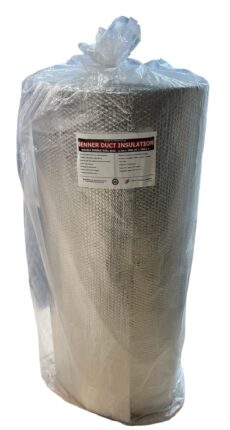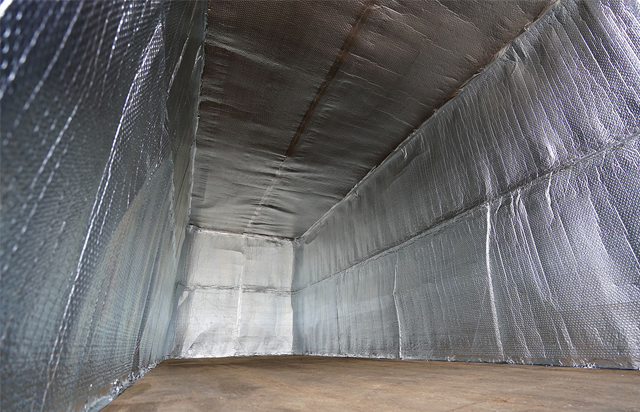Whether you’re converting a shipping container into a home, using it for storage, or shipping cargo,
it’s crucial to have a thin, flexible insulation product to shield against moisture, heat, and cold.

The Best Investment for Your Pocket!
Condensation – An unprotected container can feel like a rainforest inside. This is especially true on days with significant temperature differences between night and day. When the morning sun warms the cool metal, condensation forms. Warm air meeting the cool metal surface results in moisture buildup. The temperature disparity between the container’s exterior and interior causes this condensation, similar to a cold beverage can sweating on a hot day.
Benner Reflective Insulation Double Bubble prevents moisture buildup on the metal surfaces. It achieves this by equalizing the temperature of the metal sheeting on both the inside and outside. As the outside temperature influences the metal skin, the outer aluminum layer of Benner Reflective Insulation Double Bubble reflects this heat or cold back, maintaining consistent temperatures on both sides of the metal. The interior layer of reinforced foil further blocks heat or cold from penetrating the metal surface, thereby reducing condensation.


Radiant Heat – In the peak of summer, the sun’s rays hitting the metal sheeting can make the interior unbearably hot. The metal exacerbates both summer heat and winter cold, as it efficiently conducts temperature extremes.
Benner Reflective Insulation Double Bubble reflects 97% of radiant energy, which is the primary source of heat transfer. It also reflects internal heat back inside the container. By reflecting heat away in summer and retaining it in winter, it reduces the load on heating and cooling systems, leading to less wear and tear and lower utility costs.
Cold – During winter, the metal sheeting becomes extremely cold, turning the container into an icebox, making the inside colder than the outside environment.
The R-value of Benner Reflective Insulation Double Bubble is not impacted by humidity, which is a significant advantage. Given that there will always be some moisture in a metal building, effective insulation is essential to handle these conditions.
Don’t use Fiberglass Insulation in a Shipping Container
When Fiberglass insulation gets wet it loses its effectiveness, which is inevitable due to condensation. Moisture trapped between the fiberglass and the container’s exterior can lead to mold, fungal growth, rust, and oxidation. These conditions degrade the metal and reduce the container’s lifespan. Moreover, fiberglass insulation fails to block radiant heat transfer, a key source of heat flow in and out of your container.
In cargo containers, white vinyl facing on fiberglass insulation often sags and flakes due to the added weight of absorbed water. This wet, moldy insulation eventually leads to cracking and peeling of the vinyl. Exposure to the toxic fibers over time necessitates removal of the insulation, ideally before it causes significant damage to the container. If fiberglass must be used, pairing it with Benner Reflective Insulation Double Bubble helps keep the fiberglass dry.
Cold weather turns metal sheeting frigid, making the interior of the container colder than the outside. To combat this, it’s essential to use insulation that maintains its thermal properties in damp and cold conditions, unlike fiberglass.


